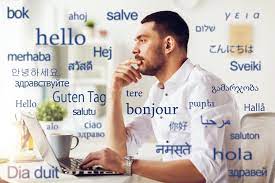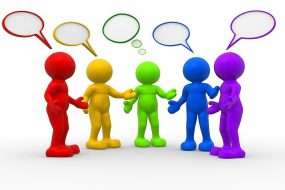
Welcome to the fascinating realm of gestures and body language, where subtle movements and expressions convey powerful messages without uttering a single word. In this comprehensive guide, we delve into the intricacies of nonverbal communication, exploring the significance of gestures and body language in various contexts. Unlock the secrets of this silent language and learn how to interpret and utilize it effectively to enhance your communication skills.
The Power of Gestures and Body Language
Gestures and body language play a pivotal role in human communication, often conveying more meaning than words alone. They can reveal emotions, intentions, and attitudes, making them a valuable tool for understanding others and expressing ourselves. Let's dive deeper into the power and significance of gestures and body language.
The Language of Movements
Nonverbal communication encompasses a wide range of gestures and body language cues. Here, we explore some key aspects of this silent language:
Facial Expressions: Windows to the Soul
Facial expressions are a primary means of conveying emotions. The human face is incredibly expressive, capable of expressing happiness, sadness, surprise, anger, and various other emotions. Paying attention to subtle changes in facial expressions can help us gauge someone's emotional state and adjust our responses accordingly.
Hand Gestures: Enhancing Communication
Hand gestures are an integral part of nonverbal communication. They can emphasize and clarify verbal messages, add emphasis or urgency, and even substitute for words in certain situations. From pointing and waving to handshakes and thumbs-up, hand gestures are universally understood and can bridge language barriers.
Posture and Body Alignment: Confidence and Presence
Our posture and body alignment speak volumes about our confidence, presence, and overall attitude. Standing tall with an open posture conveys confidence and approachability, while slouching or crossing our arms may indicate defensiveness or disinterest. Being mindful of our posture can help us convey a positive and engaging demeanor.
Eye Contact: Establishing Connections
The eyes are often referred to as the windows to the soul, and for a good reason. Eye contact plays a crucial role in establishing connections and building trust. Maintaining appropriate eye contact shows attentiveness and engagement, while avoiding eye contact can be perceived as disinterest or lack of confidence. Finding the right balance is essential in different cultural contexts.
Interpreting and Utilizing Gestures and Body Language
Understanding and utilizing gestures and body language effectively can significantly enhance our communication skills. Here are some key considerations:
Cultural Awareness: Context is Key
Gestures and body language can vary across cultures, and it's essential to be aware of these differences when communicating with individuals from different backgrounds. What may be considered acceptable in one culture could be interpreted differently or even offensive in another. Being sensitive to cultural norms helps prevent misunderstandings and promotes effective communication.
Contextual Analysis: Reading the Signs
When interpreting gestures and body language, it's crucial to consider the overall context. A single gesture or expression may have different meanings depending on the situation. Pay attention to clusters of nonverbal cues, as they often provide a more accurate picture of the individual's emotions or intentions.
Self-Awareness: Fine-Tuning Your Own Signals
Just as it's important to understand others' gestures and body language, being self-aware of our own nonverbal cues is equally vital. Pay attention to your own gestures, facial expressions, and body language to ensure they align with your intended message. Adjusting your nonverbal signals can enhance your communication effectiveness and the impression you make on others.
Adapting to Different Contexts: Flexibility is Key
Different situations call for different nonverbal approaches.
Adapting your gestures and body language to suit the context can help you build rapport, establish authority, or convey empathy, depending on the needs of the situation. Being flexible and observant allows you to communicate more effectively and connect with others on a deeper level.
5 FAQs about Gestures and Body Language
FAQ 1: Can nonverbal cues be misinterpreted?
Yes, nonverbal cues can be subject to interpretation, and misinterpretations can occur, especially when cultural differences are involved. It's crucial to be mindful of context, consider cultural norms, and seek clarification when in doubt to ensure accurate understanding.
FAQ 2: How can I improve my ability to interpret gestures and body language?
Improving your ability to interpret gestures and body language takes practice and observation. Actively observing others, studying cultural norms, and seeking feedback can help you refine your interpretation skills over time. Remember that it's a continual learning process.
FAQ 3: What are some common gestures that have different meanings in different cultures?
Certain gestures, such as the “thumbs-up” or the “OK” sign, may have positive meanings in some cultures but carry offensive connotations in others. It's crucial to research and familiarize yourself with the cultural norms of the specific context you're in to avoid unintended misunderstandings.
FAQ 4: Can gestures and body language be used to influence others?
Yes, gestures and body language can be powerful tools for influencing others. Adopting confident body language, maintaining eye contact, and mirroring the gestures of others can help establish rapport, build trust, and influence the outcome of a conversation.
FAQ 5: Can I change my own body language to project a different image?
Yes, with awareness and practice, you can change your own body language to project a different image. By adjusting your posture, facial expressions, and gestures, you can convey confidence, openness, and other desired qualities. It may require conscious effort at first, but with time, it can become natural.
Conclusion
Gestures and body language are an integral part of human communication, carrying immense meaning and influence. By understanding and utilizing this silent language effectively, we can enhance our communication skills, build stronger connections, and navigate diverse cultural contexts with greater sensitivity. Remember to be attentive, adaptable, and self-aware, as these qualities will help you unlock the secrets of nonverbal communication and leave a lasting impression in your personal and professional interactions.











